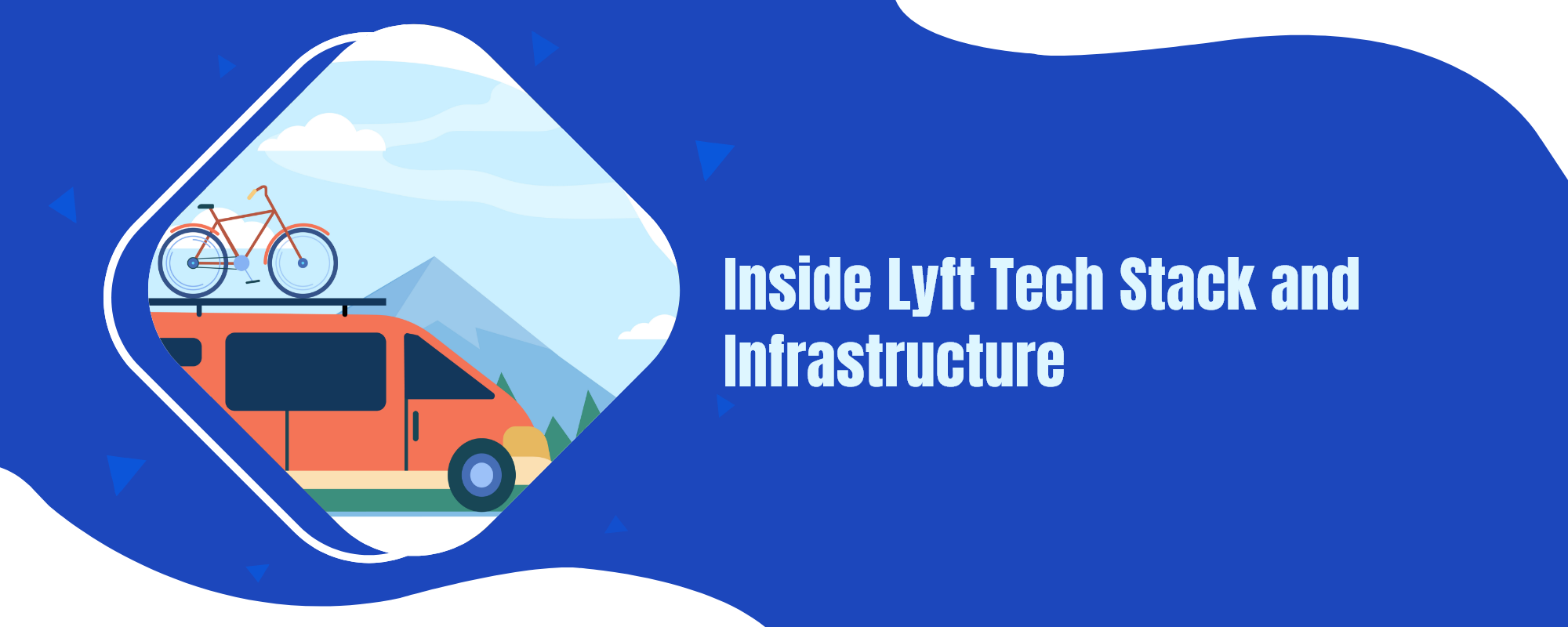As technology continues to advance at a rapid pace, companies are increasingly adopting innovative solutions to drive their business forward. One such company that has managed to stay ahead of the curve is Lyft, a leading ridesharing platform that has revolutionized the way we commute. In this article, we will delve into the intricacies of Lyft tech stack, uncovering the tools and technologies that have propelled the company to success.
From the programming languages and frameworks to the infrastructure and data analytics, we will dissect the components that make the Lyft tech stack a force to be reckoned with. So, buckle up and join us on this exciting journey to uncover the technology behind one of the world’s most popular ridesharing services.

Frontend technologies of Lyft Tech Stack
Understanding the frontend technologies of Lyft tech stack is crucial to comprehend how this ridesharing giant has seamlessly integrated various components to drive its business forward. Let’s explore the intricacies of Lyft’s frontend tech stack, including programming languages, frameworks, libraries, and other tools that have contributed to its success in the global ridesharing market.
Lyft’s frontend tech stack is a blend of modern and robust technologies that work together to deliver a seamless and enjoyable user experience. Some of the key components include:
React: React is a popular JavaScript library used for building user interfaces. Lyft utilizes React to create an interactive and responsive web application that can handle real-time updates, such as driver location and ride status changes. React’s component-based architecture allows for easy maintenance and scalability, making it an ideal choice for Lyft’s fast-paced development environment.
Redux: As a state management solution, Redux JS is used in conjunction with React to manage the application’s state in a predictable and consistent manner. By centralizing the application’s state, Redux enables Lyft to maintain a single source of truth, ensuring data consistency across different parts of the app.
Webpack: Webpack is a powerful and flexible module bundler that helps Lyft optimize its web application by bundling and minifying assets, such as JavaScript, CSS, and HTML files. This results in faster page load times and improved performance, which are essential for providing a smooth user experience.
Babel: Babel is a JavaScript compiler that allows Lyft tech stack to use the latest JavaScript features while maintaining compatibility with older browsers. By transpiring the code to a version that’s compatible with a wide range of browsers, Babel ensures that Lyft’s web app remains accessible to a diverse user base.
CSS Modules: Lyft employs CSS Modules to maintain a clean and organized stylesheet structure. By enabling the use of local-scoped CSS class names, CSS Modules help prevent style conflicts and improve the maintainability of the frontend codebase.
Enzyme: To ensure the reliability and stability of Lyft’s frontend components, Enzyme is used as a testing utility for React applications. It allows for easy manipulation, traversal, and simulation of React components, enabling Lyft to catch bugs and maintain a high-quality frontend experience.
Backend technologies of Lyft Tech Stack
Lyft’s backend tech stack is designed to support the company’s mission to provide efficient and reliable transportation services. Key components of their backend tech stack include:
Python: As Lyft’s primary programming language, Python is used extensively for server-side scripting, data analysis, and machine learning. Its readability and simplicity make it an excellent choice for managing complex systems and algorithms.
Java: Lyft also leverages Java for its backend services, particularly for high-performance and scalable applications. Java’s robust libraries and frameworks enable the development of reliable and efficient systems that can handle the demands of the transportation industry.
Go: Go is another language used in Lyft’s backend tech stack. Known for its simplicity, speed, and concurrency, Go is employed for creating microservices that can handle large volumes of data and requests.
Swift: Swift, a powerful and versatile language, is used by Lyft for developing its iOS applications. Swift’s safety features and performance optimizations ensure a seamless user experience for Lyft’s riders and drivers on Apple devices.
Flask: Flask is a lightweight Python web framework used for developing Lyft’s APIs and web applications. Its minimalistic design and modular nature allow for faster development and easy integration with other components of Lyft’s tech stack.
Docker: To ensure consistent and reproducible environments, Lyft utilizes Docker for containerization. Docker allows applications and their dependencies to be packaged together, simplifying deployment and scaling processes.
Git: Lyft relies on Git for version control and collaboration. This distributed version control system allows developers to efficiently track changes, collaborate on projects, and manage the codebase.
Amazon Web Services (AWS): As a critical component of Lyft’s infrastructure, AWS provides a scalable, secure, and cost-effective solution for hosting and managing the company’s data and services. Lyft takes advantage of various AWS services like EC2, S3, and RDS to ensure high availability and performance.
Apache Kafka: Lyft uses Apache Kafka, a distributed streaming platform, to manage real-time data processing and event-driven architectures. Kafka ensures reliable and scalable communication between Lyft’s various microservices.
Envoy: Developed in-house at Lyft, Envoy is an open-source edge and service proxy designed for cloud-native applications. It provides a high-performance, extensible, and resilient solution for service-to-service communication, traffic management, and observability.

Infrastructure technologies of Lyft Tech Stack
AWS (Amazon Web Services): Lyft relies on AWS for its cloud computing infrastructure, which provides a variety of services like EC2, S3, and RDS for compute, storage, and database management, respectively. This allows Lyft to scale its operations seamlessly and maintain high availability during peak demand periods.
Kubernetes: Lyft tech stack uses Kubernetes, an open-source container-orchestration platform, for automating the deployment, scaling, and management of containerized applications. Kubernetes helps Lyft manage its microservices architecture by providing an efficient way to deploy and manage containerized applications at scale.
Envoy: Lyft developed Envoy, an open-source edge and service proxy, to manage service-to-service communication in its microservices architecture. Envoy provides valuable features such as load balancing, service discovery, and traffic management, which help Lyft maintain a resilient and high-performing infrastructure.
Clutch: Lyft created Clutch, an extensible UI and API platform for infrastructure tooling. It allows Lyft to build custom, user-friendly interfaces for managing various aspects of its infrastructure, such as deployments, pipelines, and incident management.
Apache Kafka: Lyft uses Apache Kafka, a distributed streaming platform, for real-time data processing and event-driven architectures. Kafka enables Lyft to process vast amounts of data generated by its on-demand taxi service and power features like ride tracking, ETA calculation, and dynamic pricing.
Apache Spark: Lyft leverages Apache Spark, an open-source distributed computing system, for large-scale data processing and machine learning tasks. Spark allows Lyft’s data science and engineering teams to analyze and process the massive amounts of data generated by its platform, leading to valuable insights and improved decision-making.
Terraform: Lyft employs Terraform, an open-source infrastructure as code (IaC) tool, for provisioning and managing its cloud resources. Terraform enables Lyft to automate and streamline its infrastructure management, reducing manual effort and increasing reliability.
The cloud infrastructure of Lyft tech stack is a combination of cutting-edge technologies and platforms designed to support its on-demand taxi service. By leveraging AWS, Kubernetes, Envoy, Clutch, Apache Kafka, Apache Spark, and Terraform, Lyft can ensure high performance, scalability, and reliability while delivering a seamless user experience to its customers.
Conclusion
The Lyft tech stack plays a pivotal role in addressing the unique challenges faced by the transportation industry. This comprehensive ecosystem not only enables the company to cater to the ever-growing demands of its customers but also to maintain a seamless and reliable user experience. As the transportation landscape continues to evolve, Lyft’s commitment to technological innovation will undoubtedly solidify its position as an industry leader, driving growth and setting new benchmarks for the future.










